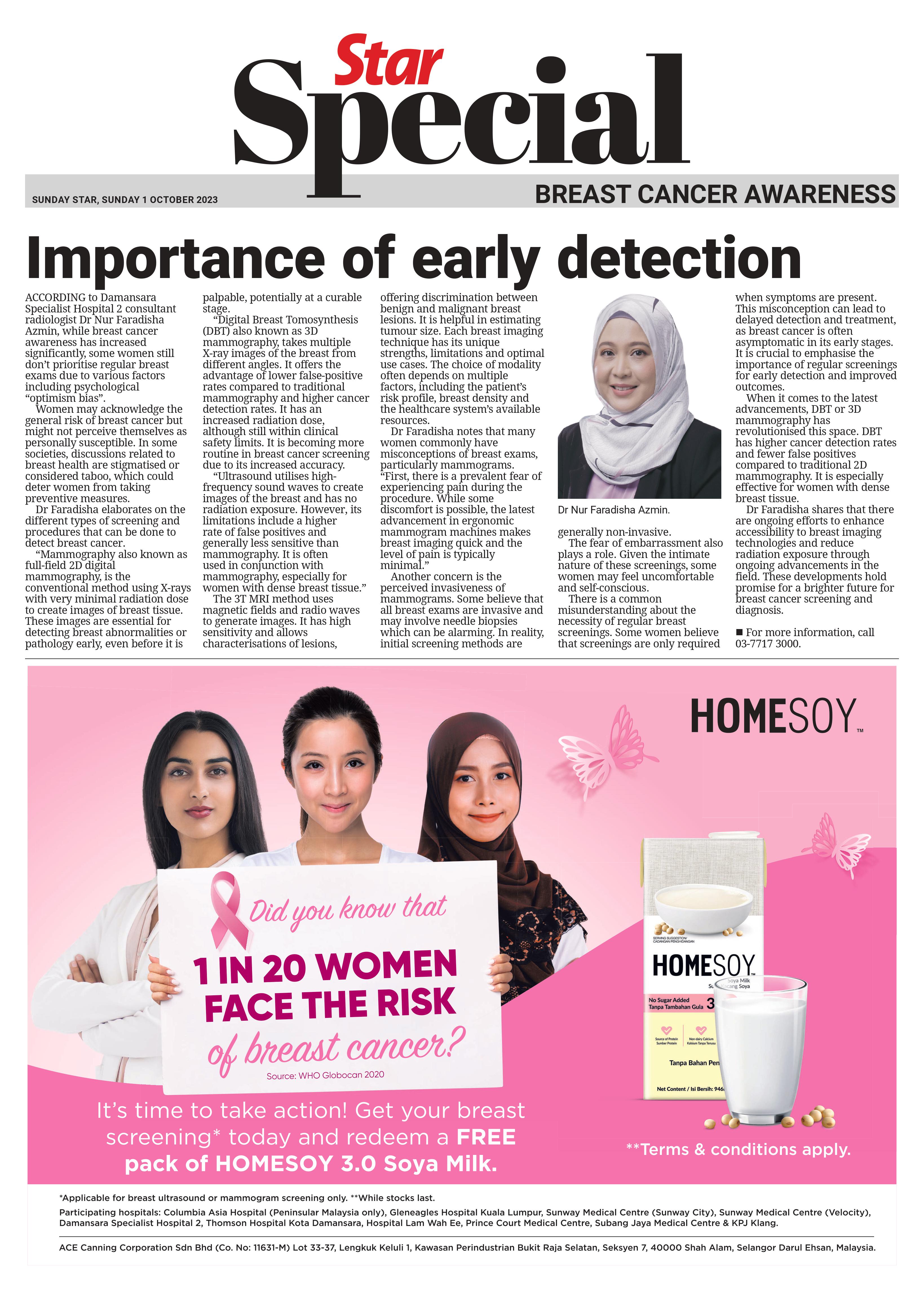Breast Cancer Awareness: Importance of early detection

Importance of early detection
ACCORDING to Damansara Specialist Hospital 2 consultant radiologist Dr Nur Faradisha Azmin, while breast cancer awareness has increased significantly, some women still don’t prioritise regular breast exams due to various factors including psychological “optimism bias”. Women may acknowledge the general risk of breast cancer but might not perceive themselves as personally susceptible.
In some societies, discussions related to breast health are stigmatised or considered taboo, which could deter women from taking preventive measures. Dr Faradisha elaborates on the different types of screening and procedures that can be done to detect breast cancer. “Mammography also known as full-field 2D digital mammography, is the conventional method using X-rays with very minimal radiation dose to create images of breast tissue.
These images are essential for detecting breast abnormalities or pathology early, even before it is palpable, potentially at a curable stage. “Digital Breast Tomosynthesis (DBT) also known as 3D mammography, takes multiple X-ray images of the breast from different angles. It offers the advantage of lower false-positive rates compared to traditional mammography and higher cancer detection rates. It has an increased radiation dose, although still within clinical safety limits.
It is becoming more routine in breast cancer screening due to its increased accuracy. “Ultrasound utilises high-frequency sound waves to create images of the breast and has no radiation exposure. However, its limitations include a higher rate of false positives and generally less sensitive than mammography. It is often used in conjunction with mammography, especially for women with dense breast tissue.”
The 3T MRI method uses magnetic fields and radio waves to generate images. It has high sensitivity and allows characterisations of lesions, offering discrimination between benign and malignant breast lesions. It is helpful in estimating tumour size. Each breast imaging technique has its unique strengths, limitations and optimal use cases. The choice of modality often depends on multiple factors, including the patient’s risk profile, breast density and the healthcare system’s available resources.
Dr Faradisha notes that many women commonly have misconceptions of breast exams, particularly mammograms. “First, there is a prevalent fear of experiencing pain during the procedure. While some discomfort is possible, the latest advancement in ergonomic mammogram machines makes breast imaging quick and the level of pain is typically minimal.”
Another concern is the perceived invasiveness of mammograms. Some believe that all breast exams are invasive and may involve needle biopsies which can be alarming. In reality, initial screening methods are generally non-invasive. The fear of embarrassment also plays a role. Given the intimate nature of these screenings, some women may feel uncomfortable and self-conscious.
There is a common misunderstanding about the necessity of regular breast screenings. Some women believe that screenings are only required when symptoms are present. This misconception can lead to delayed detection and treatment, as breast cancer is often asymptomatic in its early stages. It is crucial to emphasise the importance of regular screenings for early detection and improved outcomes.
When it comes to the latest advancements, DBT or 3D mammography has revolutionised this space. DBT has higher cancer detection rates and fewer false positives compared to traditional 2D mammography. It is especially effective for women with dense breast tissue. Dr Faradisha shares that there are ongoing efforts to enhance accessibility to breast imaging technologies and reduce radiation exposure through ongoing advancements in the field. These developments hold promise for a brighter future for breast cancer screening and diagnosis.
For more information, contact 03-7717 3000.




 Promotion
Promotion
 Find Doctor
Find Doctor


